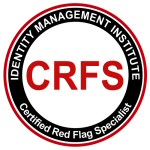Identity Theft Statistics

Last time the Federal Trade Commission (FTC) issued identity theft statistics were based on a survey that the FTC completed by interviewing a total of 4,917 US adults ages 18 and older. These interviews were conducted between March 27 and June 11, 2006. The FTC maintains and reports on unverified consumer complaints in its Sentinel Network Database which you can access at the end of this article but the statistics published as a result of the survey are real and still valid today.
Based on this identity theft survey, FTC was able to predict that over 8 million people were victims of identity theft in 2005. These identity theft victim interviews indicated that most identity theft cases belonged to "Existing Credit Card Accounts", "Existing Non-Credit Card Accounts", and "New Accounts & Other Frauds".
Although the out of pocket identity theft cost to the victims is low in 50% of the identity theft cases, others may incur costs of $1000 to $5000 depending on the type of identity theft. Statistics on identity theft also reveal that the top 5 percent of all surveyed identity theft victims spent at least 130 hours to resolve their cases, clear their names and clean up their credit reports. However, the top 5 percent of the identity theft victims in the New Accounts & Other Frauds category spent 1200 hours to resolve identity theft problems.
Interestingly enough, the identity theft statistics had also some good news revealing that the average fraud amount stolen by the identity thieves was reduced in 2006 when compared to 2003 from $4782 to $1882.
In total, the identity theft statistics revealed that 58.9% of all victims experienced the misuse of an existing credit card. A total of 48.6% of victims experienced the misuse of existing accounts other than existing credit card accounts. This identity theft trend continues to confirm my assumption that consumers are more in control of their identity protection than they think they are and by just monitoring their account activities and receiving timely account alerts regarding their account transactions, they can reduce identity theft risks and related costs by a huge margin.
In general, 21.9% of victims had their personal information used to open a new account or commit some other kind of fraud but again the majority of identity theft cases indicate the misuse of "existing accounts" whether credit card accounts, bank accounts and other accounts susceptible to fraud. The misuse of existing credit cards accounts for 61% of all existing account theft categories. Other categories of misused existing account categories are checking and saving accounts, telephone services, internet payment accounts, email and other internet accounts, and medical insurance.
Identity theft statistics on new accounts reveal that fraud was committed to receive telephone services, credit cards, loans, and bank accounts in the order of highest to lowest statistics on identity theft. Please note that most new unauthorized accounts opened were for purposes of receiving telephone services and not credit cards.
Most victims find out about the misuse of their personal information within one week. Most often, the discovery of fraud related to existing accounts is much quicker than new accounts. This is partly due to the fact that existing account fraud detection is must easier and convenient if consumers can be educated enough to apply easy and free fraud detection strategies. On the other hand, since unauthorized new accounts may involve change of address, fraud detection may be delayed. Please note that statistics on identity theft provide clues that the cost of identity theft is also much less when fraud is discovered, reported and stopped sooner.
In the case of victim relationship to the identity theft thieves, most victims do not know the thief or how they obtained their personal information however 16% of thieves may be family members, friends, neighbors or even in-home employees or personal service providers.
One of the most important aspect of the identity theft statistics is to know how identity theft is detected by most people. In the order of importance, identity theft is discovered by monitoring existing account activities, receiving bills, company notification, credit monitoring, debt collector notices, reviewing credit reports and when applying for jobs or some kind of benefits. Please note again that credit monitoring is different from reviewing credit reports. Credit monitoring relates to detecting changes made to the credit reports as they occur and reviewing credit reports is a periodic practice which will help detect fraud after it has occurred.
Read the 2014 identity theft statistics.








